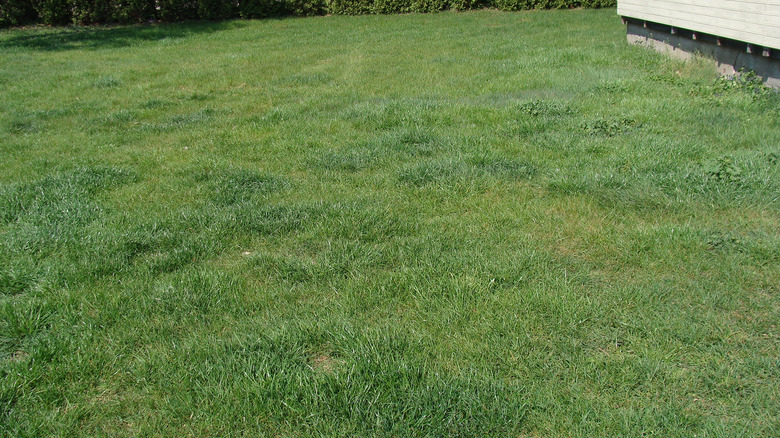Often, many of us flock to the summer shade to cool down and relax. While having a shady garden can sometimes be advantageous, too much of it could be detrimental to your lawn. At times, it may not be obvious, and even the most avid of gardeners may wonder what to look out for. One giveaway sign is if it differs in appearance from grass that gets more sunlight. It will look a lot sicklier, detracting from the groomed appearance of your yard. Everything else will be lush except for one murky patch. This can also take a lot of time and effort to repair, creating a costly mess.
Of course, this can be a frustrating scenario, even for the most budding of gardeners. You might have thought your lawn was doing well, but in reality, it’s in desperate need of light. Here is how to tell if it’s struggling in the shade.
Signs to look out for

Knowing if your grass is getting too much shade can be difficult. However, if you notice unevenness in height, that could be a dead giveaway. For example, if you notice some patches growing much faster than in other areas, you know something is amiss. That’s because the blades are growing faster to break out of the shadows and hopefully reach sunlight. You can check if that’s the case by going outside and comparing the lengths of grass both under and outside of the shade. Also, look for any patchiness or color changes. If you notice pale green or yellow grass, that can also indicate a lack of light.
However, if your lawn gets at least four hours of sunlight, then shade shouldn’t generally be a problem as it can photosynthesize. So make sure to keep an eye out and see if your grass qualifies under this criteria before deciding that shade is the issue. If your grass is getting enough sunlight, then it may be down to another problem.
Choose the correct grass
Permanent shade can be frustrating if you’re trying to grow grass, increasingly so if the shade is challenging to remove. For example, maybe a 100-year-old tree or neighbor’s house is creating your shadowy patch. However, this doesn’t have to destroy your lawn. Thankfully, choosing the correct grass type may help you to solve your shade woes once and for all.
Speaking to LawnStarter, Peter Landschoot of Penn State College of Agricultural Sciences recommends fine fescue turfgrass for these situations. “Typically, shade-tolerant seed mixtures in the northern U.S. have one or more of the fine fescues (creeping red fescue, Chewings fescue, and/or hard fescue) as the predominant component,” he explained. Cool season grasses typically fare much better in shade than warm season ones, so consider swapping them out. For cooler regions, try Tall Fescue grass or Ryegrass.